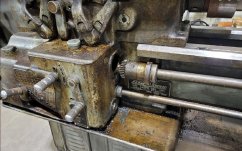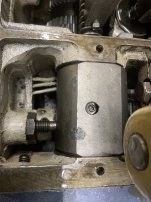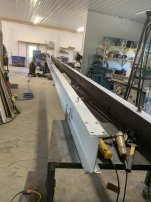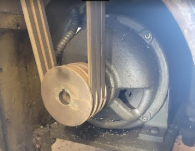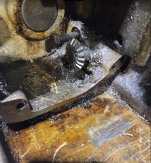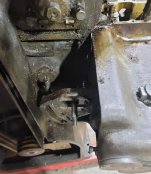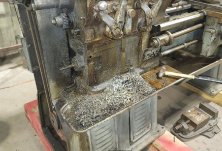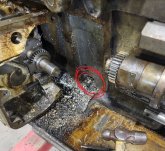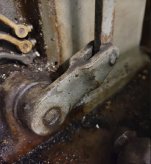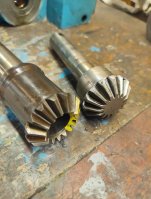I have come to the conclusion that I will tear this lathe down, separating the large major pieces. Not a major rebuild. But a decent clean up I hope. As well as addressing some repairs along the way. Plus the electric motor looks like original, and very cool, I'd like to rehab that as well.
Figuring I'd start with the obvious and see what I need to fix the broken clutch assembly. To figure it out, I'd have to get at least the qcgb end plate off. As it turns out, you must remove that end plate to have any chance to remove the qcgb assembly anyhow. Leadscrew yanked out:
View attachment 392866
Poking around to see how I might access I was curious about going through the start/stop switch hole. To my surprise there is no switch on the other side of cover. The power switch buttons are rods going through qcgb and lathe bed.
View attachment 392867 View attachment 392868
The reason end plate must be removed is the feed rod is the shaft for feed rod gear. The gear is attached to feed rod be taper pin. The only way to access the taper pin is to un-bolt qcgb end plate, and slide end plate and feed rod together a few inches, and with gear more accessible, knock out the taper pin. With gear removed, qcgb end plate slides off feed rod.
With that done, we can see into the first section of qcgb. I'm pretty sure all the chips got into this section from the key slots in the shafts going through end plate, I'm thinking I'm going to do something about that, luckily gears not damaged. We also have a better view of the power switch rods:
View attachment 392869



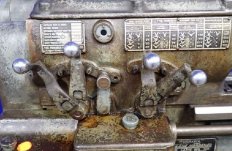

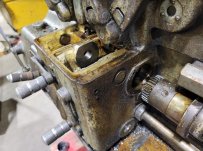



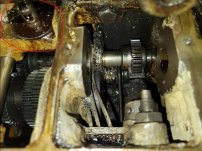
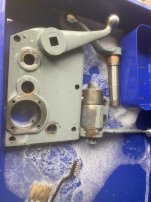


 . Hope all is well.
. Hope all is well.